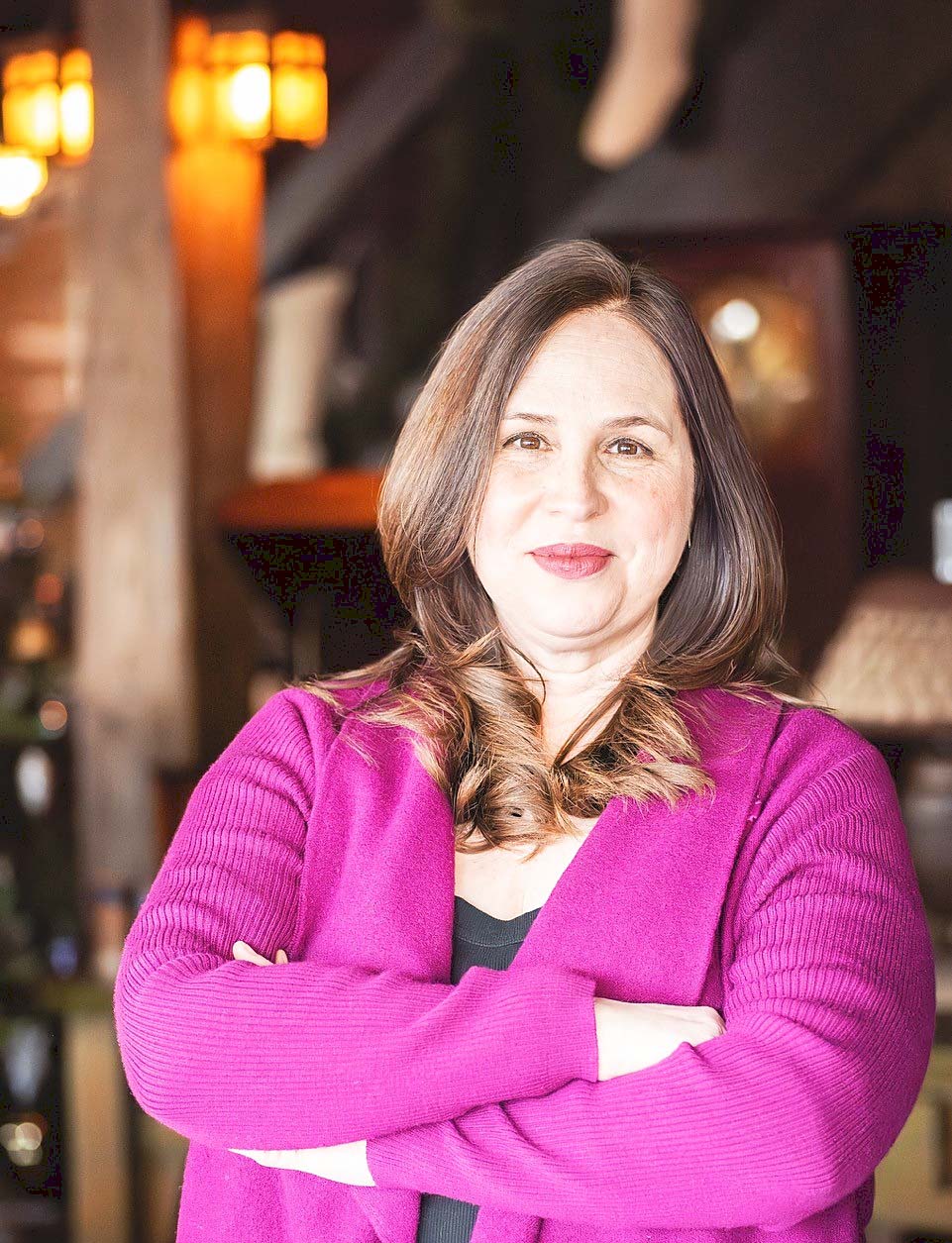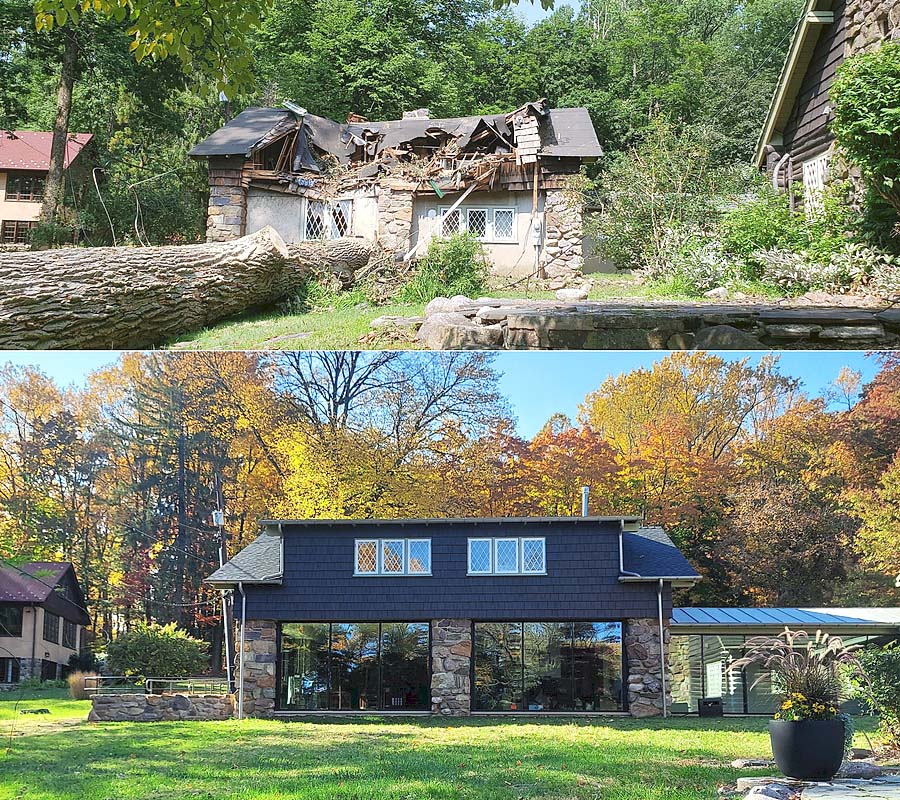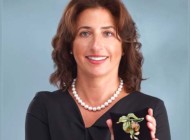
Vonda K. Givens, the executive director of The Stickley Museum at Craftsman Farms for more than a decade, recently announced that she is stepping down from her role. Givens has led the Museum through various financial developments, construction and renovation efforts — and even a pandemic. When Antiques and The Arts Weekly heard about her decision to step down, we reached out to learn more about her tenure and what’s next.
What was the Stickley Museum like when you arrived, and what does it look like now, as you are preparing to leave?
The best word I can think of is “transformation,” and I don’t say that lightly. The physical changes since I joined the staff as education director in 2008 (I became executive director in 2014) have been dramatic.
The new Education Center, completed in July 2020, is visible upon arrival. This building was the product of a multi-year project to rehabilitate an original garage building. Beyond that major project, the past 10 years have been marked by large and small changes across the property, from the installation of exterior lighting, inspired by Gustav Stickley’s own lighting scheme, a new permanent entrance sign and a wayfinding kiosk for visitors.
Perhaps the most dramatic change came with the rebuilding of the Annex, a structure adjacent to the Log House, the Stickley family home. The Annex was badly damaged during a tropical storm on August 4, 2020. Months into the pandemic, in an already challenging year, this event was heartbreaking, but in time, we realized that what seemed like tragedy was also opportunity. The Annex has been rebuilt and is now a beautiful new visitor pavilion. We were able to rebuild the Annex and undertake the restoration of the Log House kitchen simultaneously, and, after their completion, the interpretation of the Log House porch. For 35 years, the kitchen and porch had been the museum’s shop and tour orientation space, and now they are fully interpreted as period rooms.
Could you share a few instances that you considered pivotal moments of your tenure?
Outside of the physical transformation of Craftsman Farms, I’m most proud of stabilizing and growing the museum’s budget and securing its first endowment. I have focused on elevating the status and professionalism of the museum. Hiring a highly regarded senior staff member, Dr Jonathan Clancy, who has collections and preservation expertise, was a satisfying part of that effort. Jonathan urged us to move forward with the Stickley Museum Library, a long-time dream, inspired by Stickley’s great-granddaughter Barbara Fuldner, that had been overtaken by other priorities. The library is now housed in the Education Center (and may be visited by appointment), and its catalog is online. Jonathan created an online collections database, added online exhibitions, invigorated our collecting plan and digitized many of the museum’s resources, making them available worldwide. Dr Clancy is now the incoming executive director of the museum. I cannot wait to see the museum continue to grow under his leadership.

Above, a massive poplar, uprooted during a tropical storm, demolished the upper floor of the Annex. Below, the rebuilt Annex, housing the museum’s shop and visitor pavilion, turned tragedy into opportunity. Photo courtesy Vonda K. Givens.
What is it like to oversee new construction after Tropical Storm Isaias compared to a historical restoration, and what was your role in these processes?
Both structures involved new construction and restoration. Simply put, new construction is faster than restoration. Restoration is slower by design. Our efforts to protect the remaining historic fabric of the Stickley-era buildings are painstaking. Finding contractors who have the skills and knowledge to take on these projects can be a challenge, but when the right team is in place, it is immensely gratifying.
I have been a fundraiser for these projects, securing grants and capital funding, but more broadly speaking, I have seen my role as lead steward of the property, protecting Gustav Stickley’s original vision, advocating for visitor needs, ensuring the museum is an effective partner to the Township of Parsippany-Troy Hills, which owns the property, and overall, making decisions that will propel the museum forward while ensuring its longevity.
You were executive director during the Covid-19 pandemic, when all in-person operations shut down at the museum. What were some of the challenges that came with pivoting to a virtual space, and how did you overcome them?
I remember saying in March 2020, “We’ll close for a couple of weeks, and take it from there.” Of course, those weeks stretched to months and then years after the storm damage in August. Afterward, we were open only on a limited basis as we rebuilt the Annex. The full re-opening of the museum didn’t take place until October 2024. A month after closing our doors to tours, we began online programs. I’ve always been proud of the way the staff cooperatively waded into the virtual sphere together. The idea of the Stickley Museum as a virtual space evolved gradually, but in real time. We learned by trial and error. And our efforts were rewarded. Our online programs were immediately popular, attracted new donors and members, became a vital source of revenue and were a lifeline for the museum. Our popular online programs continue to this day.
Is there anything that you didn’t get to do during your tenure that you would have liked to?
Craftsman Farms has nine original buildings. Construction is a daily part of operations. I’m thrilled with what has been achieved, but there’s so much more to do. I’m looking forward to returning and seeing the coming progress.
If you’re willing to share, what does the future look like for you?
I’ll be writing! Over the past few years, whenever I found the time, I have been writing fiction, a passion since childhood. My work life in museums has been an inspiration. I hope to continue working in the museum field part-time, but I’ll be spending more time writing and preparing to deliver my first manuscript to my agent.
—Kiersten Busch




